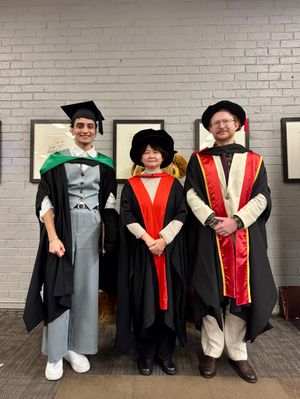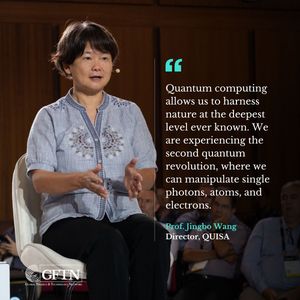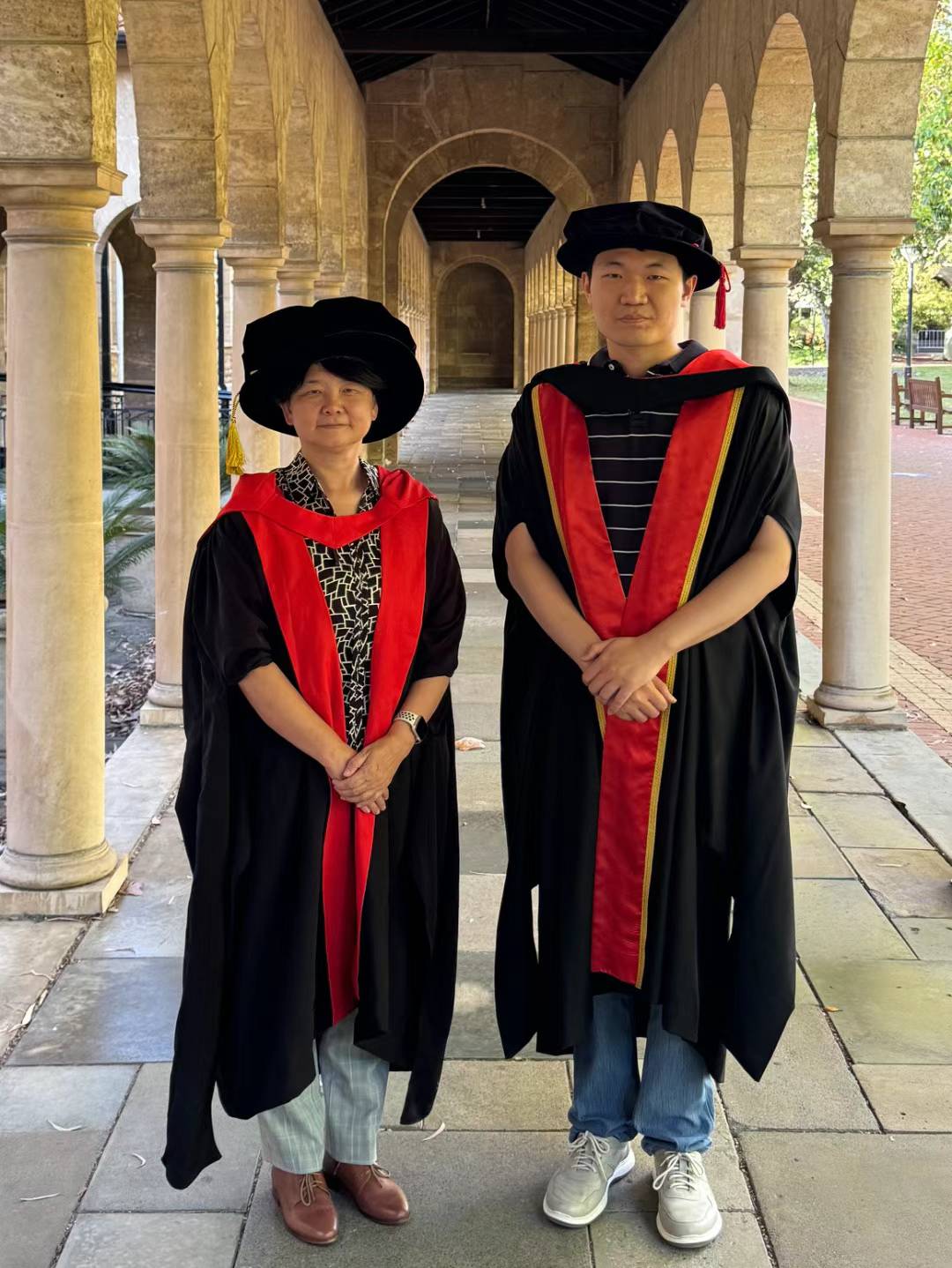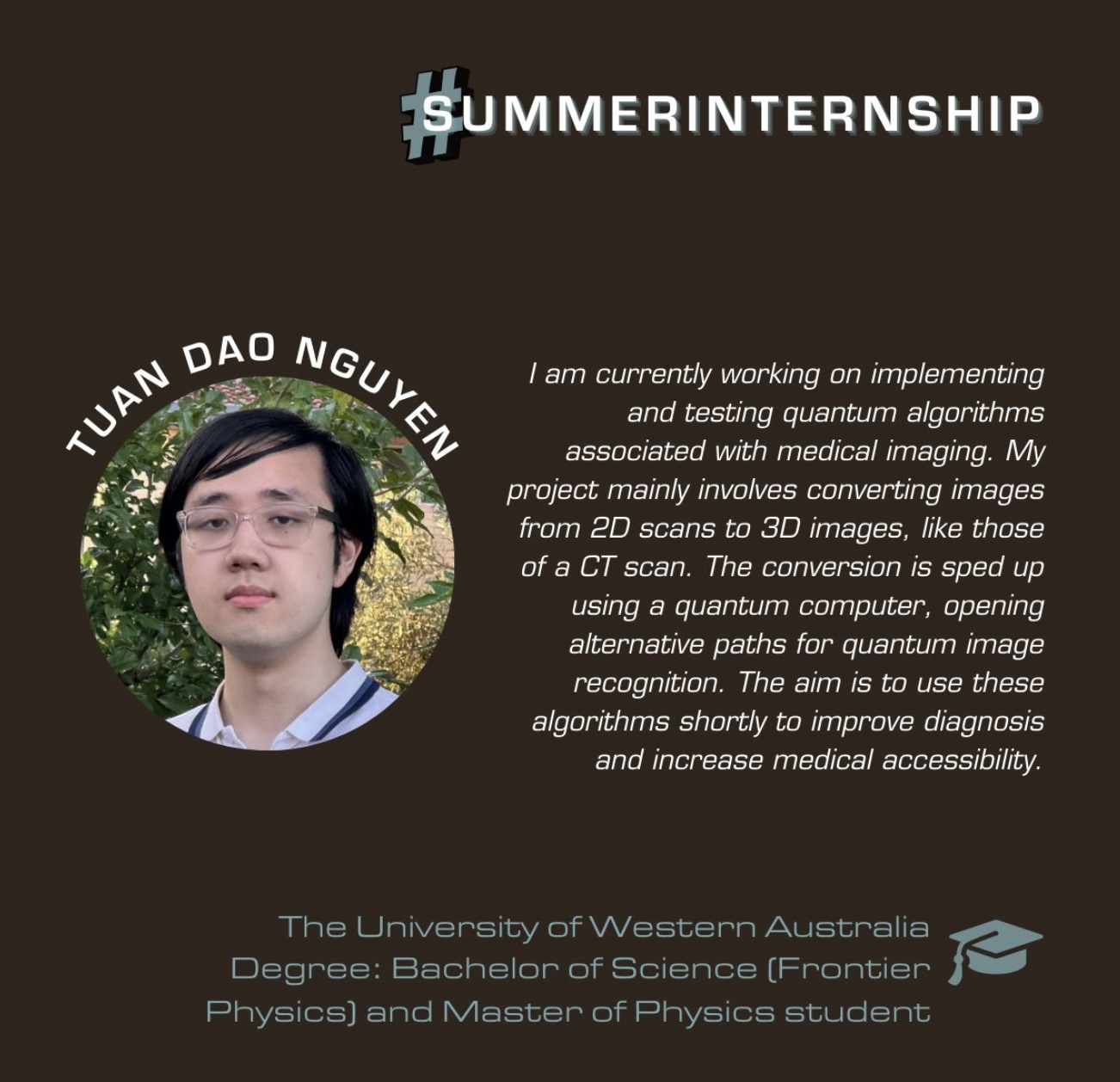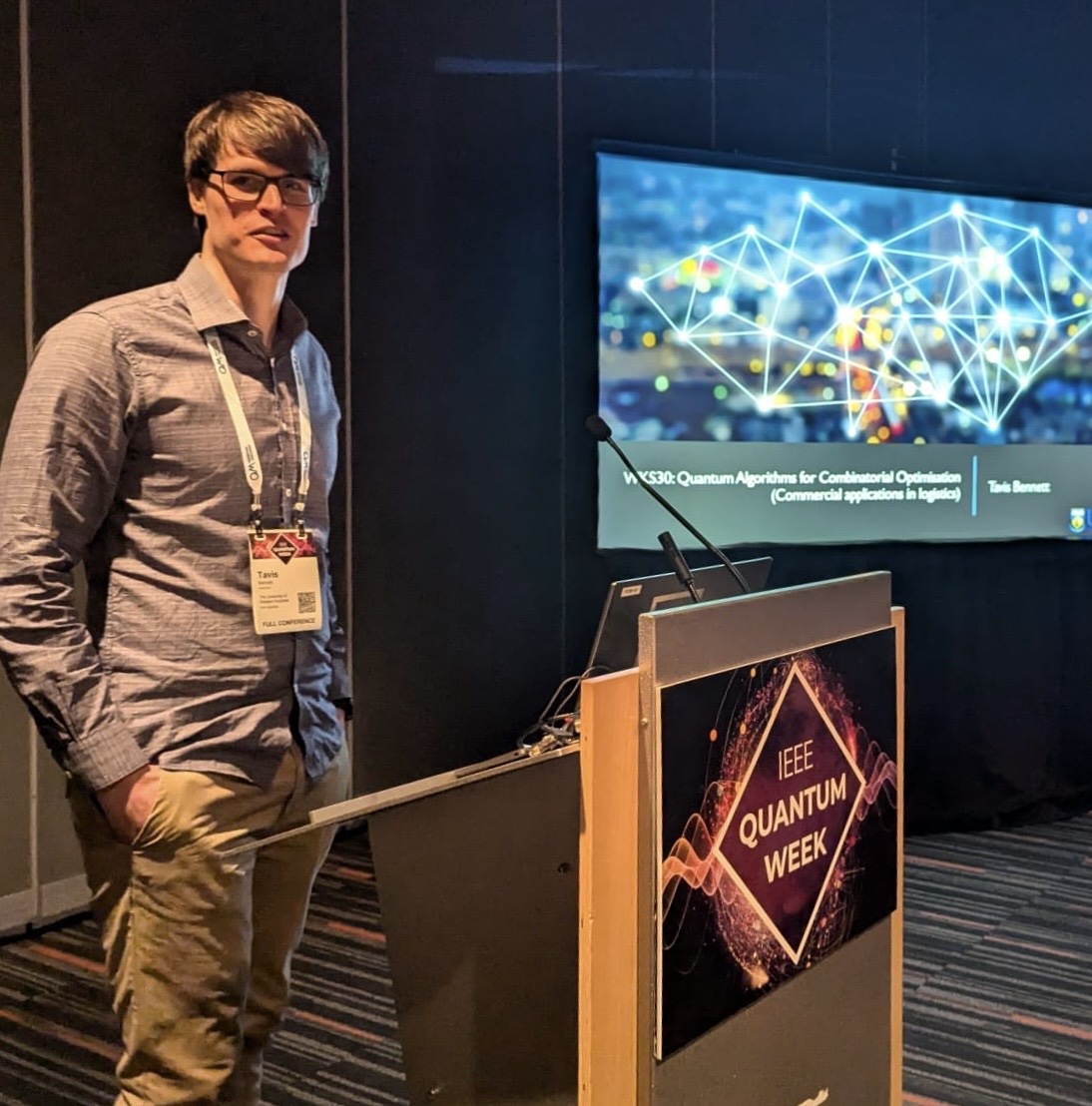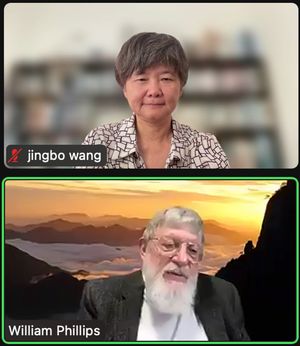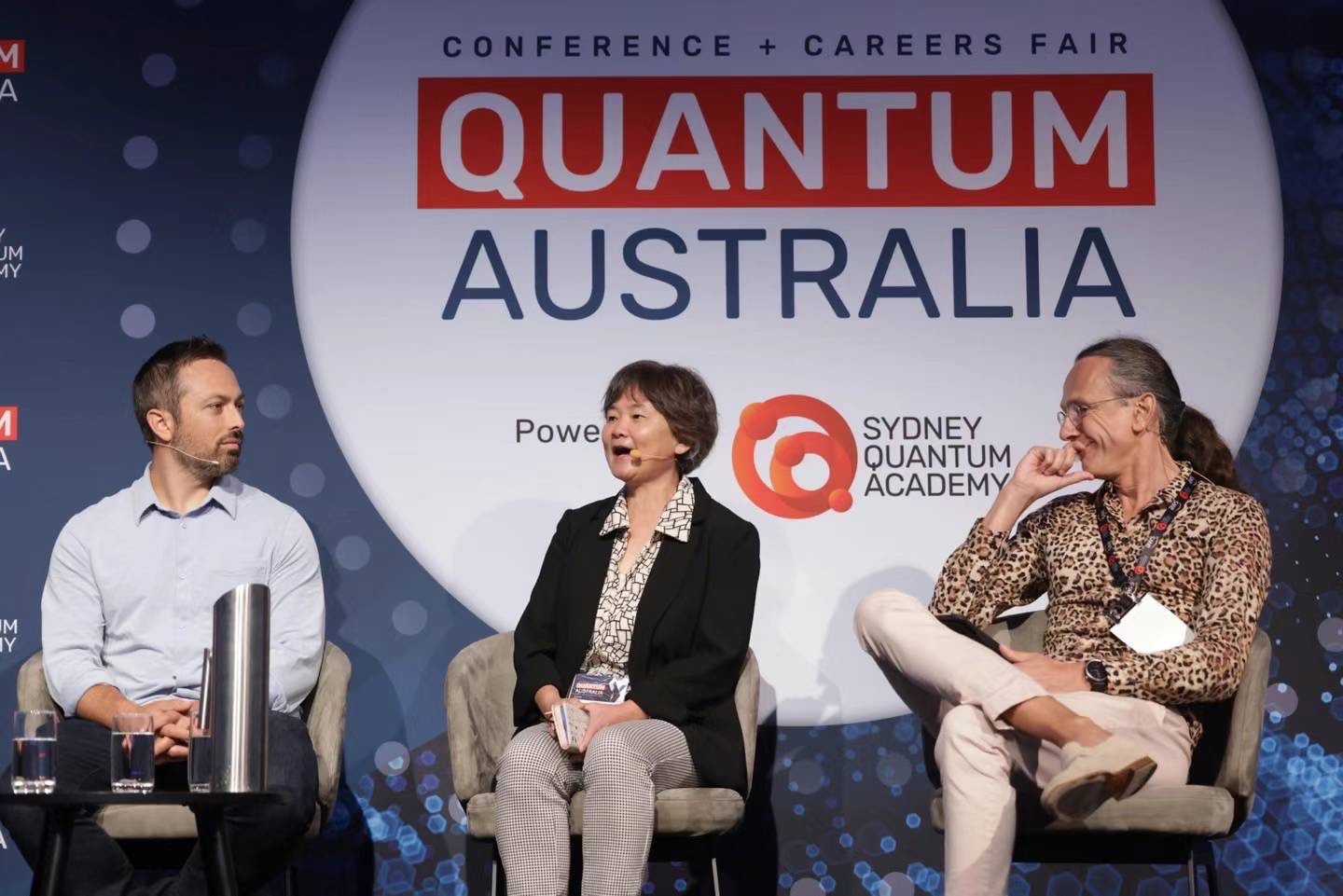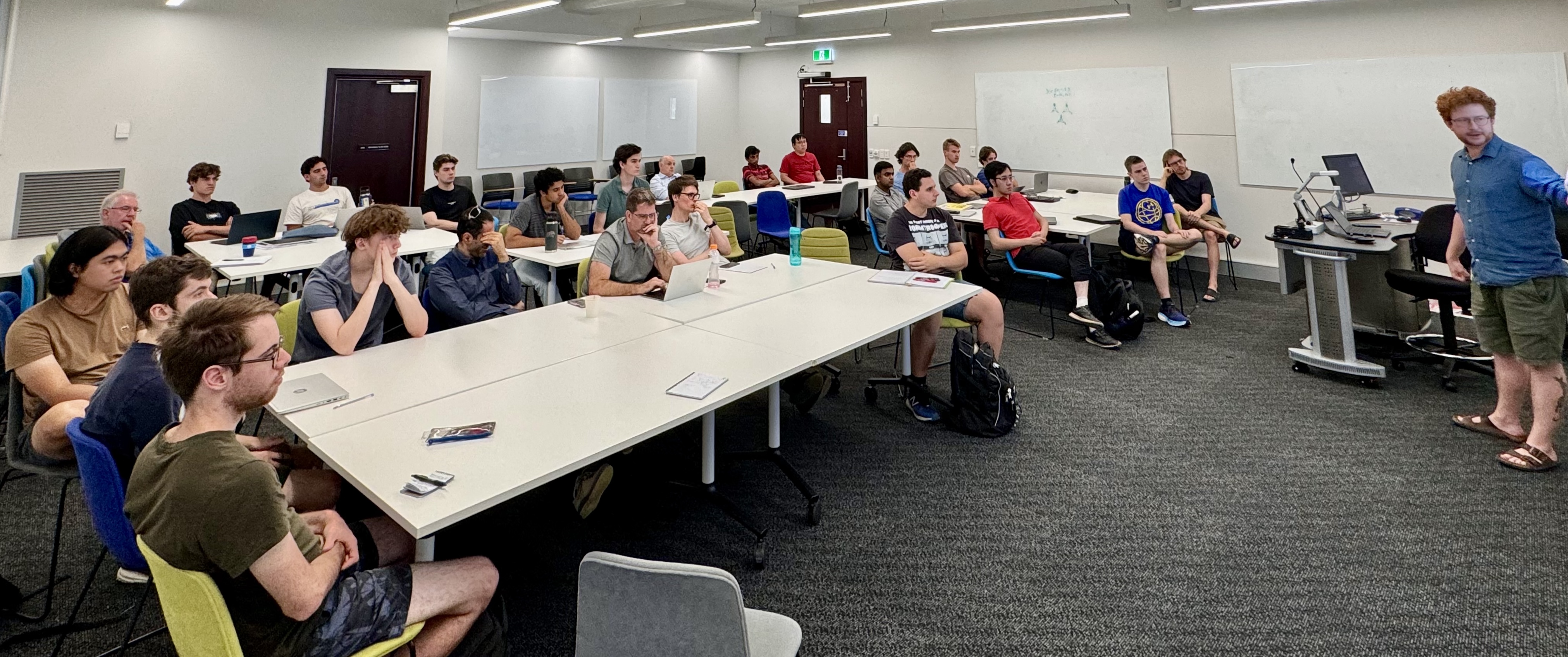Quantum computing has made significant strides since the introduction of Shor's factoring algorithm (1995) and Grover's search algorithm (1996). We now know that a quantum computer can efficiently solve vast sets of linear equations, simulate diverse Hamiltonians for physical and biological systems, perform various linear transformations such as Fourier transforms, and effectively evaluate inner products and distances in extremely high-dimensional vector spaces. Quantum computing offers the prospect of harnessing nature at a much deeper level than ever before, opening up a wealth of new possibilities for information processing and data analysis. QUISA is a multidisciplinary research team comprising experts from physics, mathematics, computer science, bioinformatics, mathematical finance, medical physics, engineering, as well as high-performance computing. Together, we offer a diverse set of projects for 2025, ranging from theoretical and mathematical research to computational and practical applications. A list of potential supervisors and current research students is included at the end of this document. Please feel free to arrange a meeting with any of us, if you have questions or need further information.
Differential equations (ODEs, PDEs, SDEs) are widely used in modelling natural phenomena and financial systems, while Bayesian inference plays a crucial role in statistical analysis and machine learning. Classical methods struggle with solving these equations and computations when the problem size grows. This project explores the use of quantum computing algorithms, such as quantum differential solvers and quantum Monte Carlo methods, to tackle these challenging problems. We focus on leveraging quantum parallelism and speedups to solve these equations more efficiently. Additionally, the project investigates how quantum computing can enhance Bayesian inference, improving posterior sampling, data analysis, and prediction accuracy in uncertain environments.
With multiple quantum computing platforms now available, such as those provided by QuEra, IBM, and Quantinuum, this project is focused on testing and validating theoretical quantum algorithms on actual quantum hardware. It involves running benchmarking tasks and evaluating the performance of algorithms under real-world conditions, such as quantum noise and qubit limitations. We will assess the practical capabilities of various quantum computing architectures—such as trapped-ion, superconducting, and neutral atom quantum computers—by comparing their performance on optimization, machine learning, and simulation problems. This project also seeks to identify the most promising platforms for specific use cases and improve the fidelity and scalability of quantum computations.
Optimization problems are ubiquitous across industries, from supply chain logistics and route planning to portfolio optimization and energy grid management. Quantum computing offers the potential to solve these problems faster and more accurately than classical approaches. This project investigates the development of quantum algorithms like the Quantum Approximate Optimization Algorithm (QAOA) and Quantum Walk-based Optimization Algorithm (QWOA), which are tailored to solve large-scale combinatorial and continuous optimization problems. By applying quantum algorithms to real-world optimization challenges, this project aims to demonstrate quantum advantages in areas such as resource allocation, scheduling, and operational efficiency. Additionally, hybrid quantum-classical approaches will be explored to maximize the practical use of current quantum technologies.
The integration of quantum computing into machine learning and image processing is one of the most exciting frontiers in quantum technology. This project focuses on developing quantum machine learning (QML) algorithms, such as quantum support vector machines, quantum neural networks, and quantum kernel methods, which can offer advantages over classical approaches in speed, accuracy, and data handling. In the field of imaging, quantum algorithms can be applied to enhance image classification, segmentation, and denoising tasks, leading to improvements in medical imaging, remote sensing, and surveillance technologies. The project aims to provide scalable and robust quantum methods that outperform classical techniques in tasks requiring high-dimensional data processing and large datasets.
Recent advances in quantum computing and generative artificial intelligence are opening new avenues for the analysis of RNA sequences, whose structural and functional complexity poses significant challenges in bioinformatics. This project seeks to leverage quantum AI models to advance the prediction and design of RNA and protein structures. By integrating quantum computing with cutting-edge generative algorithms, this research aims to surpass current limitations in RNA and protein structure prediction, thereby making impactful contributions to computational biology and the development of novel therapeutics.
The financial sector presents numerous high-stakes computational problems, including portfolio optimization, risk assessment, derivative pricing, and fraud detection. This project seeks to apply quantum computing to solve these challenges more efficiently than traditional methods. Quantum algorithms, such as quantum Monte Carlo for risk analysis and quantum optimization for portfolio management, can potentially offer significant speedups in processing financial data and simulations. Additionally, quantum computing can enhance machine learning techniques in financial markets, leading to improved predictive modelling and algorithmic trading strategies. The project will focus on developing real-world applications of quantum finance, collaborating with financial institutions to test and deploy these algorithms.
This project aims to develop an innovative quantum software package to achieve more efficient, sensitive, and specific high-resolution medical imaging in applications including CT and PET scanners. Our proposed framework follows a three-step procedure: (1) the encoding of the output signals of radiation detectors into quantum states; (2) a quantum algorithm for the simulation of radiation transport through the body; and (3) the design of a quantum optimisation regime to find near-optimal solutions representing patient anatomy and function with a solution quality that is impossible to match with a non-quantum approach. The applications of this framework extend to improved diagnostics, treatment outcomes, and the design of facilities across broad ranging radiation-related industries. The project will also explore the use of quantum machine learning for processing medical images and other high-dimensional data sets, aiming to improve accuracy in early detection and personalized healthcare.
This project focuses on developing engaging quantum games and puzzles as its main activity. These interactive tools are crafted to demystify and illustrate complex quantum principles through hands-on, immersive experiences. By incorporating fundamental concepts such as superposition, interference, entanglement, and quantum measurement into enjoyable and challenging formats, the project aims to make quantum computing accessible and captivating for learners of all ages. The objective is to offer an innovative educational approach that enhances comprehension and sparks a deeper interest in quantum technologies. Through this approach, participants will gain practical insights into quantum mechanics while having fun, effectively bridging the gap between theoretical concepts and their real-world applications.
Deep neural networks are the driving force behind the recent breakthroughs in AI. They are already widely deployed in everyday applications, including safety-critical domains (e.g., autonomous vehicles, medical diagnostics, and financial systems). The ability to formally verify the behaviour of these networks would provide substantial benefits, including reliability, safety and interpretability. Although many different algorithms for neural network verification are available, they suffer significant scaling challenges. As a result users have to compromise - either by reducing the size of the network which reduces its performance, or by simplifying the specification which less accurately captures the desired behaviour. However, some of the most successful verification algorithms take the form of a highly structured branching search. This suggests that the problem is potentially well-suited to quantum computing, which is particularly effective at exploring exponentially many branches in parallel. This project would be to look at the initial stages of developing algorithms for neural network verification that are capable of running on quantum hardware.
Quantum computing has made significant strides since the introduction of Shor's factoring algorithm (1995) and Grover's search algorithm (1996). We now know that a quantum computer can efficiently solve vast sets of linear equations, simulate diverse Hamiltonians for physical and biological systems, perform various linear transformations such as Fourier transforms, and effectively evaluate inner products and distances in extremely high-dimensional vector spaces. Quantum computing offers the prospect of harnessing nature at a much deeper level than ever before, opening up a wealth of new possibilities for information processing and data analysis. QUISA is a multidisciplinary research team comprising experts from physics, mathematics, computer science, bioinformatics, mathematical finance, medical physics, engineering, as well as high-performance computing. Together, we offer a diverse set of projects for 2025, ranging from theoretical and mathematical research to computational and practical applications. A list of potential supervisors and current research students is included at the end of this document. Please feel free to arrange a meeting with any of us, if you have questions or need further information.
Differential equations (ODEs, PDEs, SDEs) are widely used in modelling natural phenomena and financial systems, while Bayesian inference plays a crucial role in statistical analysis and machine learning. Classical methods struggle with solving these equations and computations when the problem size grows. This project explores the use of quantum computing algorithms, such as quantum differential solvers and quantum Monte Carlo methods, to tackle these challenging problems. We focus on leveraging quantum parallelism and speedups to solve these equations more efficiently. Additionally, the project investigates how quantum computing can enhance Bayesian inference, improving posterior sampling, data analysis, and prediction accuracy in uncertain environments.
With multiple quantum computing platforms now available, such as those provided by QuEra, IBM, and Quantinuum, this project is focused on testing and validating theoretical quantum algorithms on actual quantum hardware. It involves running benchmarking tasks and evaluating the performance of algorithms under real-world conditions, such as quantum noise and qubit limitations. We will assess the practical capabilities of various quantum computing architectures—such as trapped-ion, superconducting, and neutral atom quantum computers—by comparing their performance on optimization, machine learning, and simulation problems. This project also seeks to identify the most promising platforms for specific use cases and improve the fidelity and scalability of quantum computations.
Optimization problems are ubiquitous across industries, from supply chain logistics and route planning to portfolio optimization and energy grid management. Quantum computing offers the potential to solve these problems faster and more accurately than classical approaches. This project investigates the development of quantum algorithms like the Quantum Approximate Optimization Algorithm (QAOA) and Quantum Walk-based Optimization Algorithm (QWOA), which are tailored to solve large-scale combinatorial and continuous optimization problems. By applying quantum algorithms to real-world optimization challenges, this project aims to demonstrate quantum advantages in areas such as resource allocation, scheduling, and operational efficiency. Additionally, hybrid quantum-classical approaches will be explored to maximize the practical use of current quantum technologies.
The integration of quantum computing into machine learning and image processing is one of the most exciting frontiers in quantum technology. This project focuses on developing quantum machine learning (QML) algorithms, such as quantum support vector machines, quantum neural networks, and quantum kernel methods, which can offer advantages over classical approaches in speed, accuracy, and data handling. In the field of imaging, quantum algorithms can be applied to enhance image classification, segmentation, and denoising tasks, leading to improvements in medical imaging, remote sensing, and surveillance technologies. The project aims to provide scalable and robust quantum methods that outperform classical techniques in tasks requiring high-dimensional data processing and large datasets.
Recent advances in quantum computing and generative artificial intelligence are opening new avenues for the analysis of RNA sequences, whose structural and functional complexity poses significant challenges in bioinformatics. This project seeks to leverage quantum AI models to advance the prediction and design of RNA and protein structures. By integrating quantum computing with cutting-edge generative algorithms, this research aims to surpass current limitations in RNA and protein structure prediction, thereby making impactful contributions to computational biology and the development of novel therapeutics.
The financial sector presents numerous high-stakes computational problems, including portfolio optimization, risk assessment, derivative pricing, and fraud detection. This project seeks to apply quantum computing to solve these challenges more efficiently than traditional methods. Quantum algorithms, such as quantum Monte Carlo for risk analysis and quantum optimization for portfolio management, can potentially offer significant speedups in processing financial data and simulations. Additionally, quantum computing can enhance machine learning techniques in financial markets, leading to improved predictive modelling and algorithmic trading strategies. The project will focus on developing real-world applications of quantum finance, collaborating with financial institutions to test and deploy these algorithms.
This project aims to develop an innovative quantum software package to achieve more efficient, sensitive, and specific high-resolution medical imaging in applications including CT and PET scanners. Our proposed framework follows a three-step procedure: (1) the encoding of the output signals of radiation detectors into quantum states; (2) a quantum algorithm for the simulation of radiation transport through the body; and (3) the design of a quantum optimisation regime to find near-optimal solutions representing patient anatomy and function with a solution quality that is impossible to match with a non-quantum approach. The applications of this framework extend to improved diagnostics, treatment outcomes, and the design of facilities across broad ranging radiation-related industries. The project will also explore the use of quantum machine learning for processing medical images and other high-dimensional data sets, aiming to improve accuracy in early detection and personalized healthcare.
This project focuses on developing engaging quantum games and puzzles as its main activity. These interactive tools are crafted to demystify and illustrate complex quantum principles through hands-on, immersive experiences. By incorporating fundamental concepts such as superposition, interference, entanglement, and quantum measurement into enjoyable and challenging formats, the project aims to make quantum computing accessible and captivating for learners of all ages. The objective is to offer an innovative educational approach that enhances comprehension and sparks a deeper interest in quantum technologies. Through this approach, participants will gain practical insights into quantum mechanics while having fun, effectively bridging the gap between theoretical concepts and their real-world applications.
Deep neural networks are the driving force behind the recent breakthroughs in AI. They are already widely deployed in everyday applications, including safety-critical domains (e.g., autonomous vehicles, medical diagnostics, and financial systems). The ability to formally verify the behaviour of these networks would provide substantial benefits, including reliability, safety and interpretability. Although many different algorithms for neural network verification are available, they suffer significant scaling challenges. As a result users have to compromise - either by reducing the size of the network which reduces its performance, or by simplifying the specification which less accurately captures the desired behaviour. However, some of the most successful verification algorithms take the form of a highly structured branching search. This suggests that the problem is potentially well-suited to quantum computing, which is particularly effective at exploring exponentially many branches in parallel. This project would be to look at the initial stages of developing algorithms for neural network verification that are capable of running on quantum hardware.
